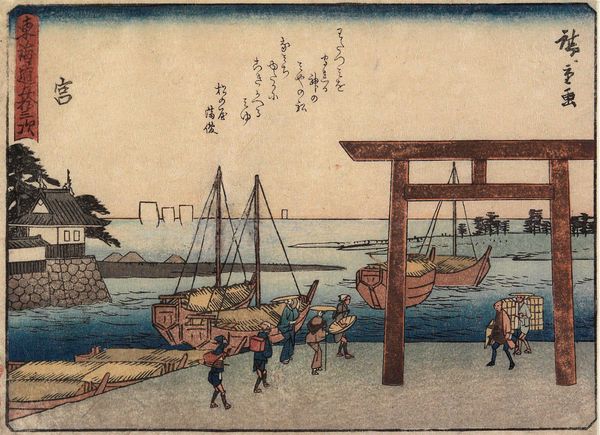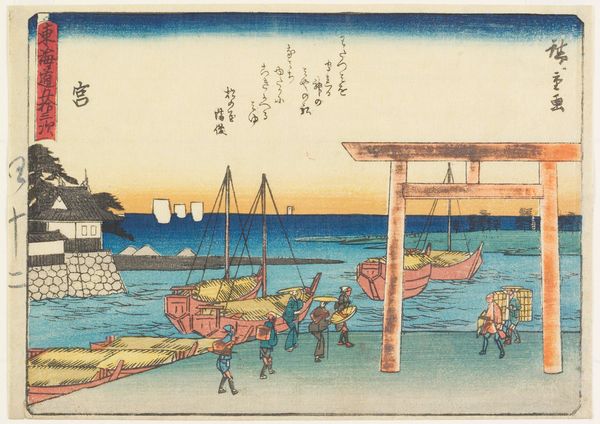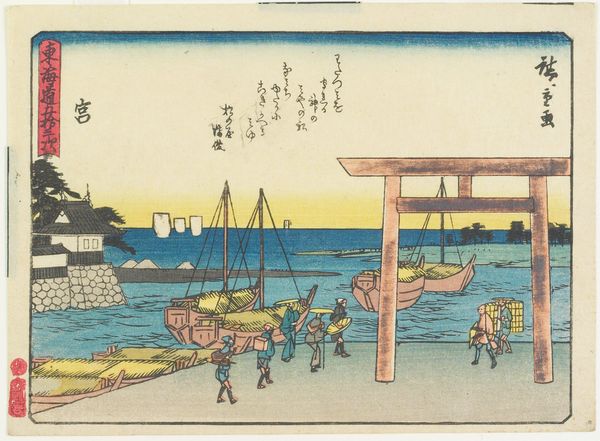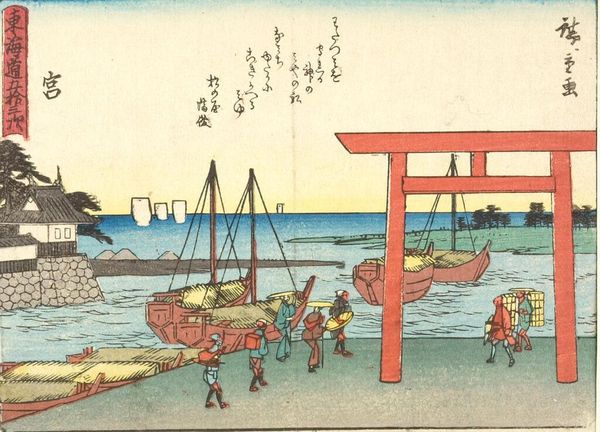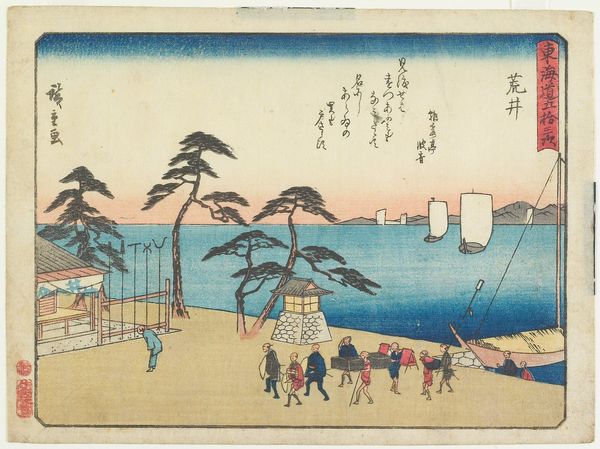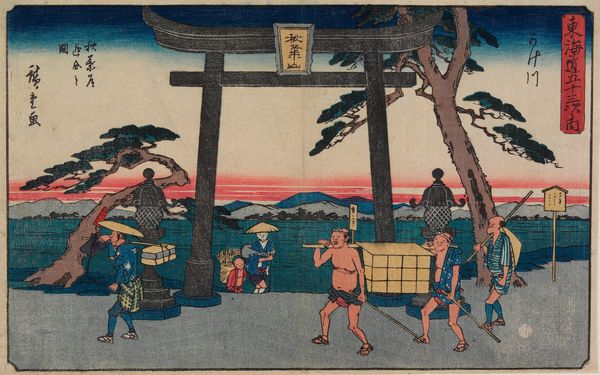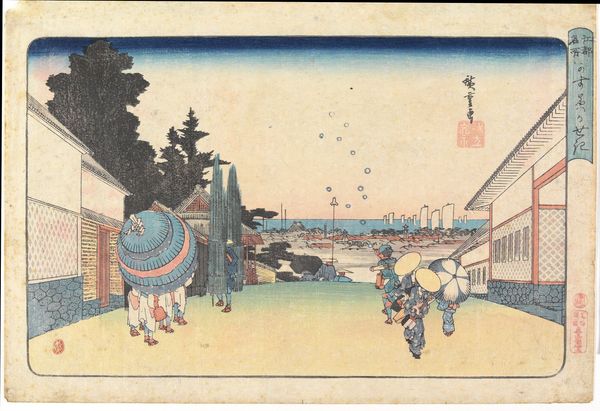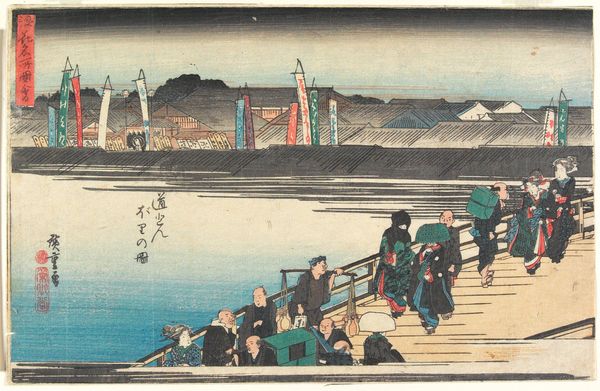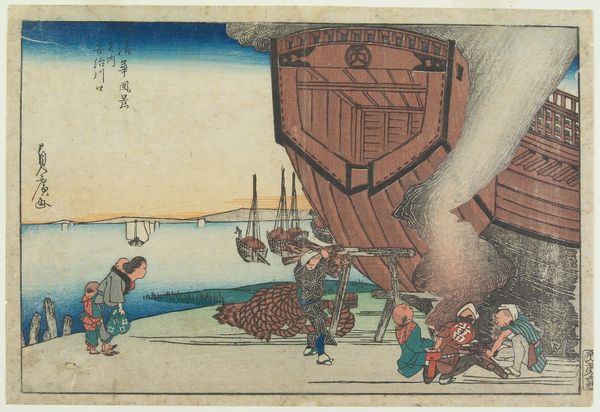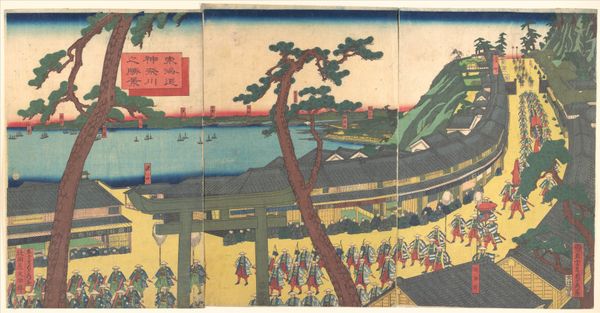
print, ink, woodblock-print
# print
#
asian-art
#
landscape
#
ukiyo-e
#
ink
#
woodblock-print
#
genre-painting
Dimensions: 6 x 8 5/16 in. (15.2 x 21.1 cm) (image)6 7/16 x 8 1/2 in. (16.3 x 21.6 cm) (sheet)
Copyright: Public Domain
Curator: Let’s turn our attention to this beautiful woodblock print by Utagawa Hiroshige, created around 1840 to 1842. It's titled "Miya," and it offers a glimpse into a scene from the Tokaido Road, a crucial historical and cultural artery in Japan. What are your initial thoughts? Editor: Well, I'm immediately struck by the light – that pale, almost watercolor wash of dawn creeping into the scene. There’s such stillness, despite all the little figures scurrying about. It's a kind of melancholic peace, like the quiet before a busy market day. Curator: That's perceptive. Hiroshige masterfully captures the transition of time and place. "Miya" depicts a bustling port, a crucial stop on the Tokaido. The print, rendered in ink and colors on paper, gives us insight into the socio-economic landscape of the era. The presence of laborers suggests hierarchies within the communities living along the route, reminding us of how integral socio-economic considerations are within works from this period. Editor: Right! The red boats give me a pang too – like, where are they coming from, what stories do those little folks carry in their burdens? It’s fascinating how much narrative Hiroshige manages to squeeze into such a small frame. And the gate! Such a perfect, quiet geometry setting off against the messy work happening all around it. Curator: That "gate" or torii has very distinct spiritual meaning. These types of symbolic archways served to demarcate spaces, often separating the secular from sacred spaces and enshrining pathways to deities or spirits. In essence, they were transformative entryways from profane areas into the more metaphysical world, reflective of spiritual ideologies of the period. Hiroshige's skillful deployment of iconography in landscapes invites conversation with gender theory by bringing awareness to these different planes of experiences. Editor: Absolutely. I see how these kinds of images not only invite us to travel visually, but also imaginatively and intellectually – backward, forward. Thanks to his beautiful print, I think I'll keep mulling over who built this gate, and why I find myself standing before it! Curator: Indeed. By engaging with the layers of historical context, coupled with personal responses, we can truly appreciate the richness that artworks like “Miya” offer.
Comments
No comments
Be the first to comment and join the conversation on the ultimate creative platform.
